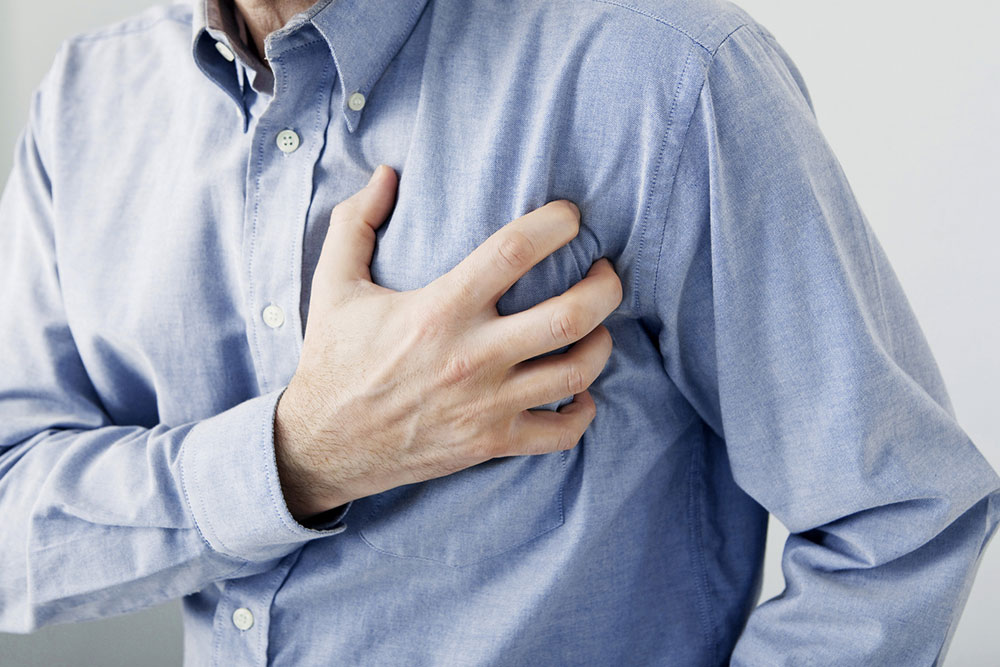10 Signs and Symptoms of Congenital Heart Disease
Congenital heart disease, also called congenital heart defect, refers to a type of structural abnormality in one’s heart that is mostly present at birth. The disease can affect one’s heart valve, wall, or vessels, and reduce, block, or distort the normal blood flow. In most cases, such defects can be discovered during pregnancy ultrasound or other general tests like a chest X-ray or an MRI scan. Congenital heart disease usually runs in families.
Common warning signs
The disease is more common in children, but adults may also be at risk. The signs of a congenital heart defect may vary from one person to another.

1. Changes in heart rate or abnormal heart rhythms
Both children and adults with congenital heart defects can notice sudden changes in their heartbeat. Normally, a resting heart should beat around 60 to 100 times per minute, but when these defects develop, the heart may beat too slowly or too fast. These abnormal heartbeats, also called arrhythmias, may originate from the upper chamber of the heart, called atria, giving rise to a condition known as atrial arrhythmia.
2. Changes in skin color
Due to low oxygenation, newborns, especially those with congenital heart defects, may have bluish lips or skin. Their fingers and toes may also be affected.
3. Heart murmurs
Heart murmurs refer to some unusual sounds that can be heard between heartbeats. These murmurs are like whooshing noises and are more clearly audible with a stethoscope.
4. Chest pain
One may experience a constant throbbing pain in the chest due to the condition.
5. Breathing problems
This is one of the first signs a person with congenital heart disease experiences. Due to inadequate blood flow and increased blood volume in the lungs, one may feel symptoms like breathlessness and rapid or labored breathing. This symptom is common in both adults and children.
6. Dizziness
This symptom is also common in those with heart defects. As an extension of fatigue, it may cause a sudden but temporary loss of consciousness due to severe blood flow obstruction.
7. Swelling
This is another common sign of congenital heart defect. Swelling occurs when fluid collects inside body tissues — a phenomenon known as edema.
8. Fatigue
The heart pumps blood and delivers oxygen to the body, ensuring all organs function optimally and generate the necessary energy to perform daily tasks. But, congenital heart defects interfere with this task and can lead to a general and constant sense of tiredness. Here, the heart works extra hard to pump blood. If one’s child is seen getting unnaturally and easily tired, it is important to consult a health expert promptly and get the heart rate and condition checked.
9. Poor or delayed growth
Children with congenital heart defects may not grow normally in the physical sense as other kids; they may take longer to start walking or talking. The condition also causes low energy levels, respiratory issues, and feeding problems.
10. Developmental issues
Apart from physical issues, children suffering from the disease may also face issues with learning and development. They may pick up languages slower than their peers or need help expressing themselves. Other signs include impaired memory, low attention span, or inability to concentrate for long. They may not be able to control impulses and show poor planning skills. These issues happen due to low oxygen supply to the body during early childhood, which affects brain function and development.
Other symptoms
Apart from this, newborns with a congenital heart defect may feel lighter when held than a normal, healthy newborn. Excessive sleepiness and a weak pulse may also be seen.
At times, a baby will not show any signs of simple defects, which can include ventricular septal defects (VSD), patent ductus arteriosus (PDA), and Pulmonary Stenosis. VSD refers to a hole in the wall that separates the heart’s two lower chambers and causes oxygen-rich and oxygen-poor blood to mix. PDA is the opening between the aorta and the pulmonary artery, which is supposed to close after birth but remains open and allows abnormal blood flow through it. Pulmonary Stenosis, on the other hand, is the narrowing of the pulmonary valve, which can obstruct blood flow. In some cases, these simple defects may get better without surgery.
Risk factors
As mentioned earlier, congenital heart defects can run in families. If a parent or a relative suffers from the condition, they may pass it on to the child. Also, increased blood sugar levels, diabetes, or catching a viral infection called rubella can put one at risk of developing it. Some treatments during the first trimester of pregnancy can also put one’s child at risk of developing congenital heart defects.

